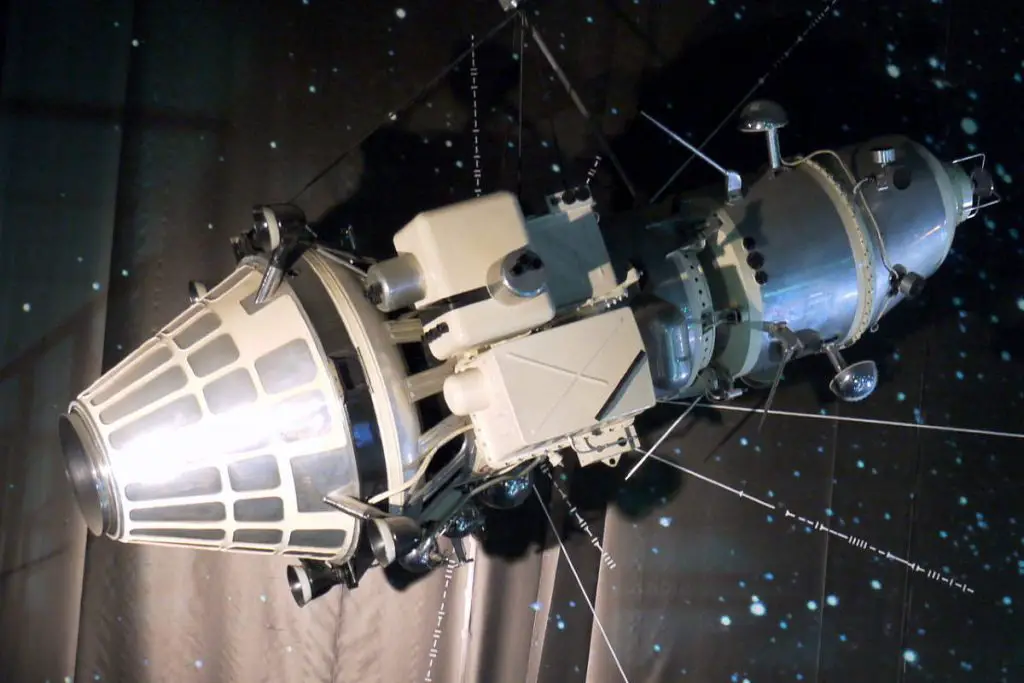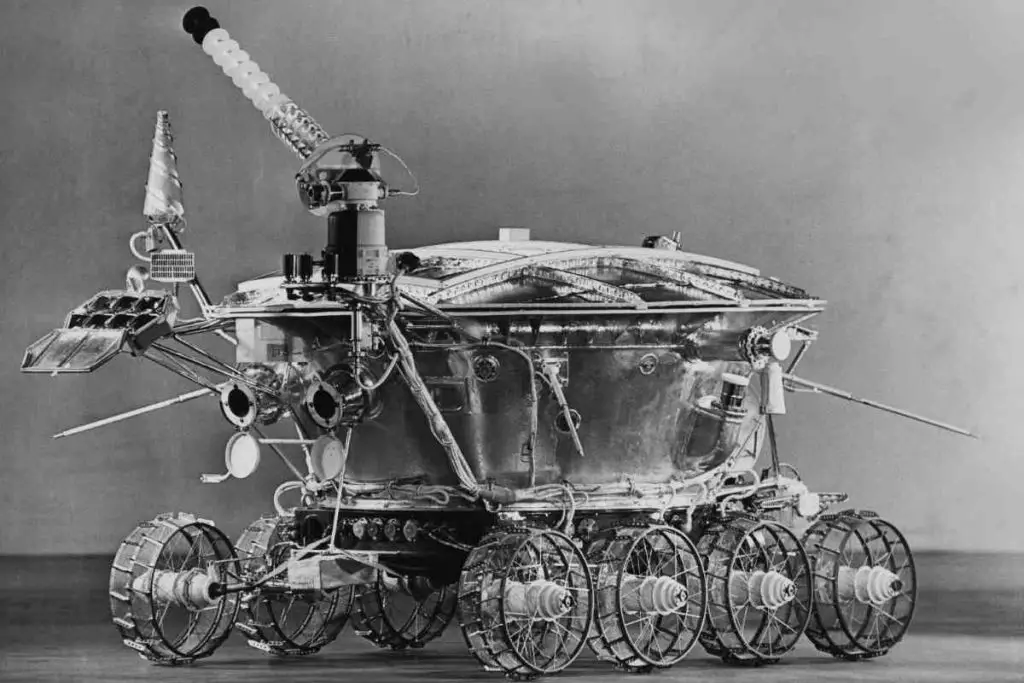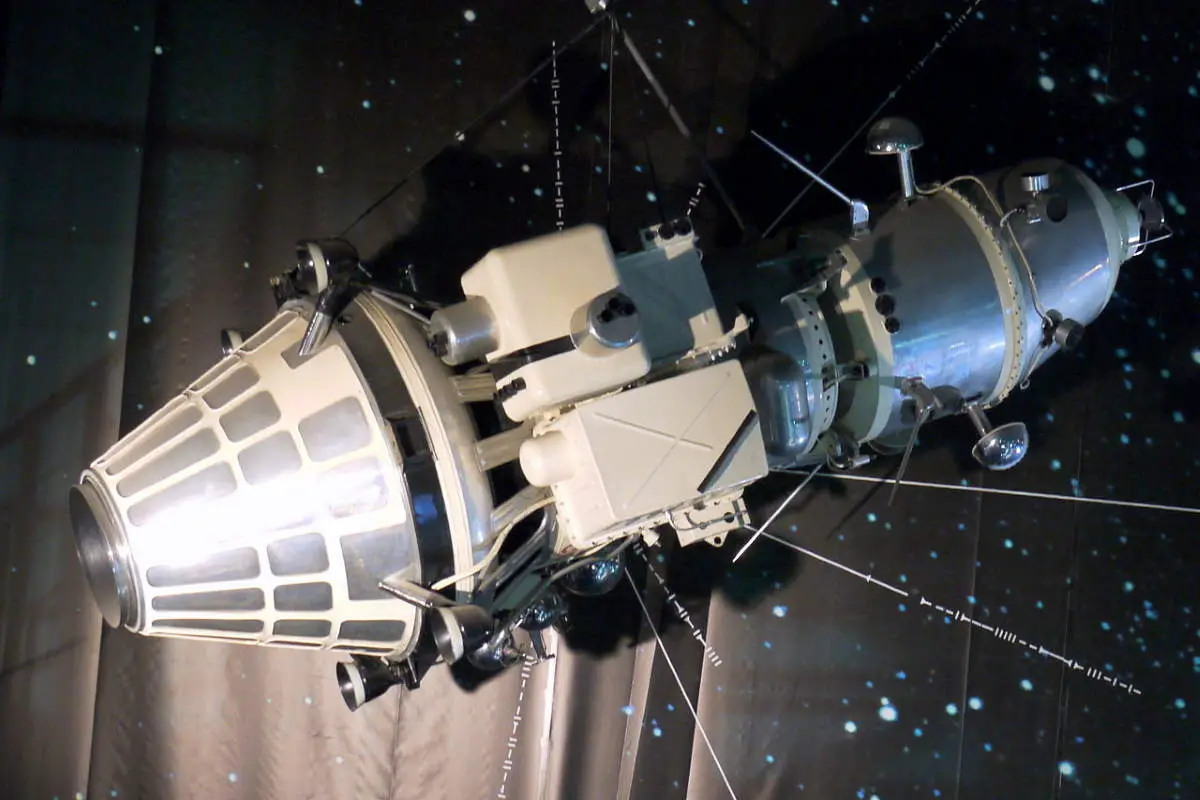On April 3, 1966, Luna 10, a 1966 lunar robotic spacecraft in Soviet Union’s Luna Program (see notes 1) became the first artificial satellite to orbit another world the Moon.
Today’s (April 1) story of what happened this day in Science, Technology, Astronomy, and Space Exploration history.
Luna 10
Soviet Union’s Luna 10 was the first spacecraft to go into orbit around the Moon. By doing so, it also became the first human-made object to orbit any celestial body beyond the Earth.
Luna 10 was launched on March 31, 1966. After a mid-course correction on April 1, the spacecraft entered lunar orbit on April 3, 1966, and completed its first orbit 3 hours later (on 4 April Moscow time).
Then, at 18:45:39 UT, a 546-pound (248.5-kilogram) instrument compartment separated from the main bus which was in a 217 x 631 mile (350 × 1,016-kilometer) lunar orbit inclined at 71.9 degrees to the lunar equator.
The primary objectives of the Luna 10 mission were:
- Achieving the first lunar orbit
- Gaining experience in orbital operations, presumably as a precursor to astronaut orbital missions
- Studying the lunar environment.
Luna 10 completed one lunar orbit at 2 hours and 58.05 minutes.

Luna 10 had a 1582 kg (3488 lbs) of launch mass and 540 kg (11900.5 lbs) of dry mass.
The launch was timed so that the spacecraft would come around on its first orbit just as the 23rd Congress of the Communist Party of the Soviet Union was convening for its morning session. Luna 10 carried a set of solid-state oscillators which had been programmed to reproduce the notes of the Internationale (a left-wing anthem that has been a standard of the socialist movement since the late nineteenth century) so that it could be broadcast live to the 23rd Communist Party Congress.
During a rehearsal on the night of April 3, 1966, the playback went well, but the following morning, controllers discovered a missing note. They decided to play the previous night’s tape to the assembled gathering at the Congress, claiming it was a live broadcast from the Moon.
Luna 10 data
The following results were extracted from the data that Luna 10 spacecraft returned to Earth:
- The data returned showed the moon has a weak to a non-existent magnetic field
- There is cosmic radiation of 5 particles/cm2/sec
- 198 micrometeoroid impacts
- There’s no discernable atmosphere
- The moon has a highly distorted gravity field, suggesting a non-uniform mass distribution.
- The gamma-ray spectrometer gave compositional information on the Moon’s surface, showing it to be similar to terrestrial basalt.
End of the mission
Luna 10 operated for 56 days, covering 460 lunar orbits and 219 active data transmissions before the batteries were depleted and radio signals were discontinued on May 30, 1966. The orbit at that time was 378 x 985 km with an inclination of 72.2 degrees.
The spacecraft’s orbit would have decayed fairly rapidly, and it is assumed that Luna 10 impacted the surface of the Moon sometime in 1966 at an unknown location.

April 3 in Science, Technology, Astronomy, and Space Exploration history
- 1973: The first cell phone call was performed
- 1966: Luna 10 became the first artificial satellite to orbit another world (the Moon)
Notes
- Named after the Russian word “Luna” meaning “Moon”, Soviet Union’s Luna program was a series of robotic spacecraft missions sent to the Moon between 1959 and 1976. 15 were successful, each designed as either an orbiter or lander, and accomplished many firsts in the history of space exploration. They also performed many experiments, studying the Moon’s chemical composition, gravity, temperature, and radiation.
Sources
- Luna 10 on Wikipedia
- Luna 10 on the NASA Solar System website
- Luna program on Wikipedia
- Luna 10 on the NASA Space Science Data Coordinated Archive website
- Moon Landings: All-Time List [1966-2025] - February 2, 2025
- What Is Max-Q and Why Is It Important During Rocket Launches? - January 16, 2025
- Top 10 Tallest Rockets Ever Launched [2025 Update] - January 16, 2025

